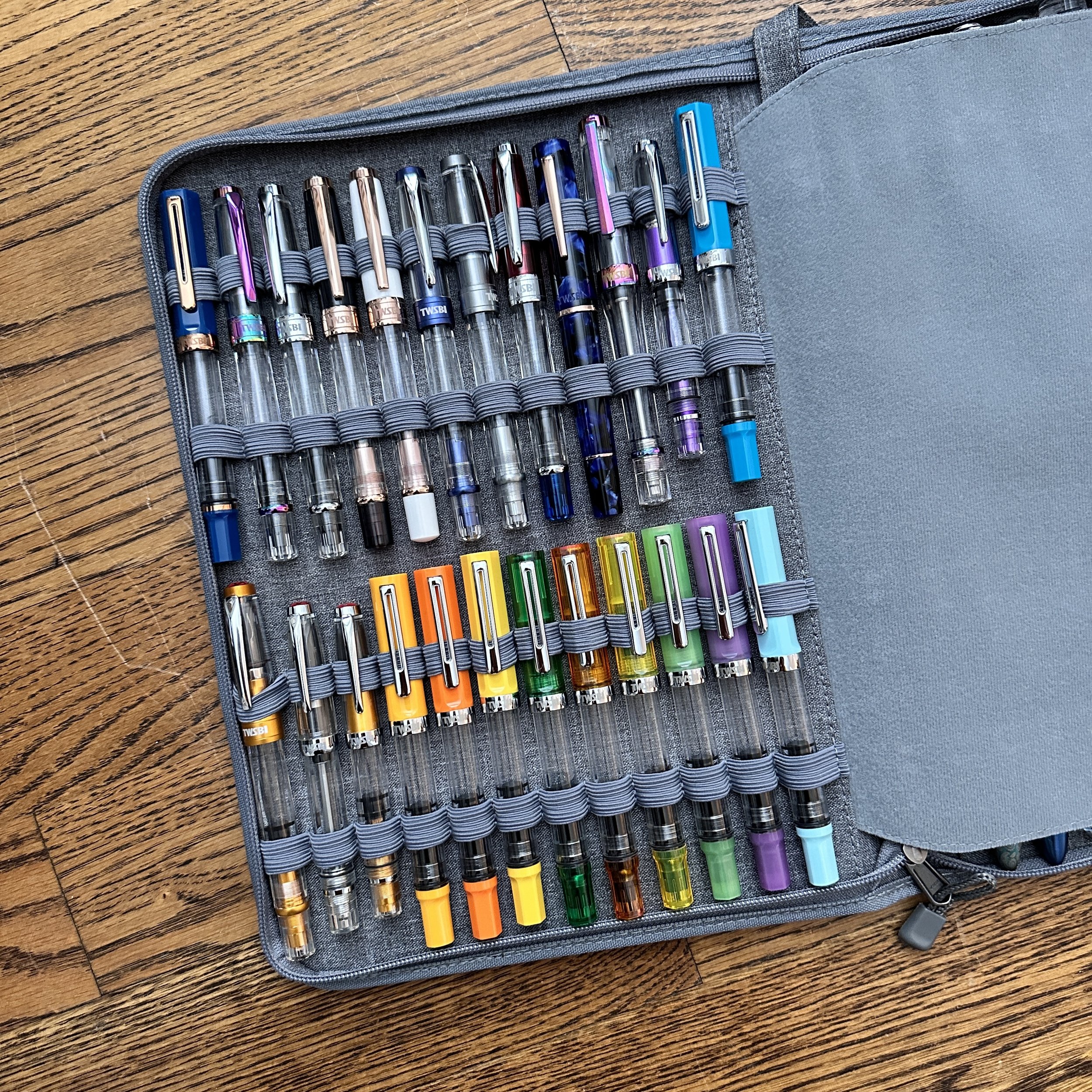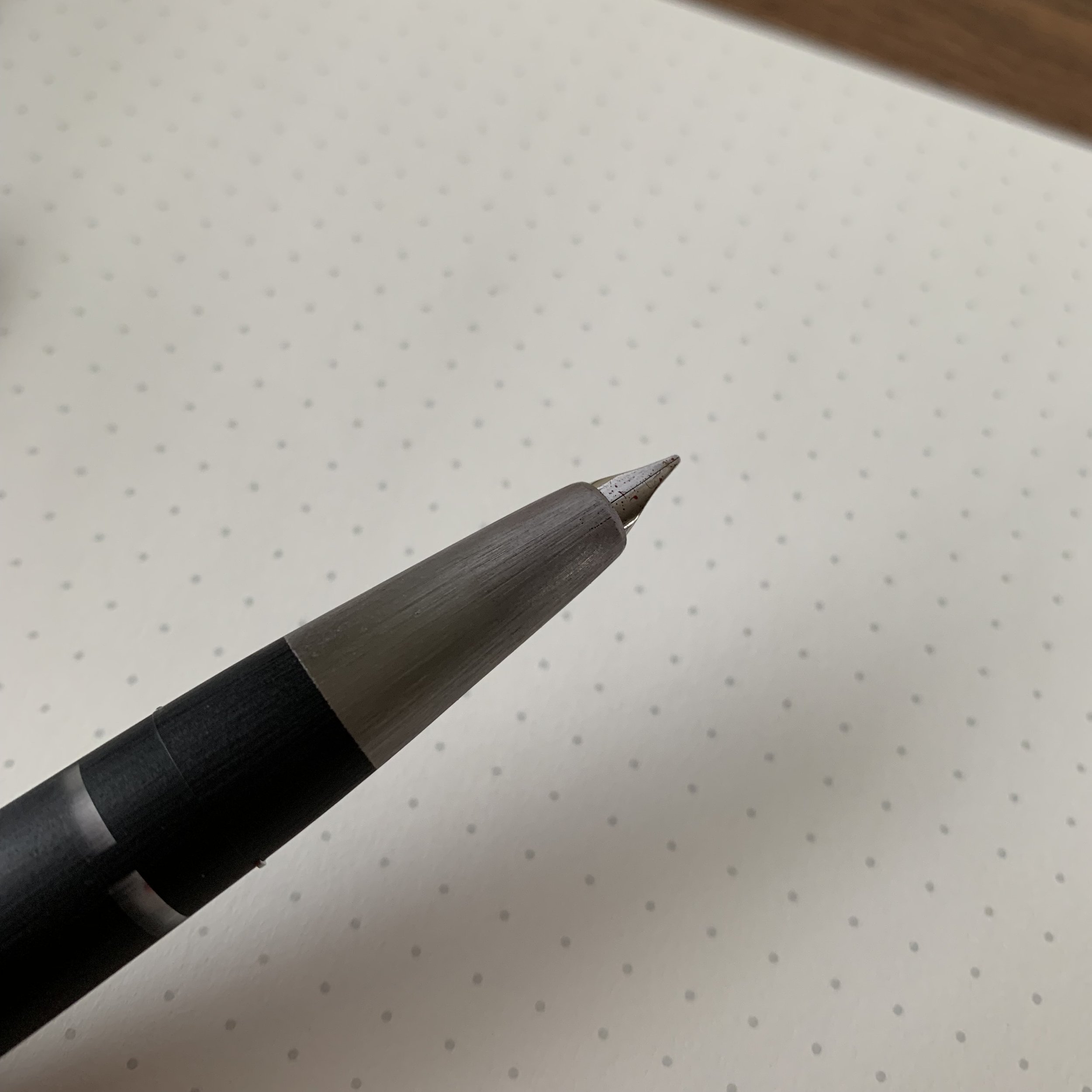Last weekend’s trip to the California Pen Show only reinforced my perception that the pen community is growing, and exponentially at that! Most of my workshop attendees were attending their first pen show, and I continue to get questions via the website from readers looking to invest in their first “nice” pen, whether that’s a fountain pen, a ballpoint, or even a quality pencil.
While the internet is an excellent resource for new users, with a wealth of pen-related information available in forums, on YouTube, and on blogs (and yes, even Reddit), I’ve noticed something of mild concern: many of the “opinions and observations” about specific brands and products that I remember seeing in forums 10+ years ago are still prevalent, even if they’re no longer accurate due to updates in product offerings, ink formulations, and manufacturing techniques. I’m not faulting the newbies here: once something appears on the internet, it’s forever, and as we all know too well, if you repeat something enough times people will accept it as truth regardless of accuracy. I thought it worthwhile to do a post addressing a handful of specific beliefs/ideas that keep popping up:
I try to put my money where my mouth is.
Myth No. 1: TWSBI Pens Always Crack
I’m hesitant to even post this and resurrect “the debate”, but I feel that I have to say it because I’ve handled more TWSBIs in 10 years than most people, both as an enthusiast and (more recently) as a retailer: I have not found TWSBI's any more prone to cracking than any other plastic pen at a similar price point, and cracking is certainly not inevitable. I currently have 25 TWSBI pens in my possession, between my personal collection and product samples. I’ve probably bought and subsequently sold an equal number since 2015. During that time, I’ve had 2-3 pens develop cracks. Two were Diamond 530 and 540 fountain pens (the initial models from 2014-2016 that were indeed prone to cracking), and the other was a first-generation Diamond Mini that developed a hairline crack on the posting threads. I still have the latter pen - the crack is stable and doesn’t affect the usability of the pen. Notably - and of course I’m probably jinxing myself here - I don’t recall ever having had a TWSBI pen returned to my shop due to cracking.
From left: Lamy Noto and Lamy 2000 ballpoints, plus writing samples from the fine and medium Lamy ballpoint refills.
Myth No. 2: Lamy Makes a Bad Ballpoint Refill
“I love the look of the Lamy ballpoints but everything I read says that Lamy ballpoint refills are terrible and you can’t replace them with an Easyflow 9000.” I get this question multiple times a month, and again, it’s largely derived from either (1) old information; or (2) someone writing a “review” extrapolating their personal preference to a general judgment about a product. My take: Starting in about 2017, the quality of Lamy ballpoint refills has consistently been excellent. Prior to that, I found the refills could be dry and often “skippy” (i.e., not writing a consistent line), but as I discuss a bit more below, ballpoint refills have improved across the board in the past 10 years, including at Lamy. Today, Lamy’s M16 refill is one of my favorite everyday writers, as is the M22 that fits the Lamy Pico. I even have a “Fine” M16 refill loaded into my 2000 ballpoint pen, and Lamy ballpoints at multiple price points constitute a core pen recommendation for those looking to give a pen as a gift. (Be sure to check out the new “Noto” and “econ” ballpoints, which are ridiculously inexpensive for their cool design.)
In recent years, the wider availability of low-viscosity ballpoint refills like the Jetstream has driven many other manufacturers to up their game.
Myth No. 3: The Schmidt Easyflow9000 Is the Best ballpoint refill
“Does it come with an Easyflow9000, because I’ve been told that’s the only ballpoint pen worth buying.” (Translation: I read on the internet that the Schmidt Easyflow9000 is the only good standard ballpoint refill and you should therefore only buy compatible pens.) Here’s the deal: 10 years ago, you might have been right, because a lot of ballpoint refills - especially proprietary refills - were “skippy”, clogged easily, and didn’t write nearly as smoothly as Schmidt’s flagship cartridge. I used to buy Easyflows by the dozen. Today, it’s probably fourth or fifth on my list of preferred ballpoint refills, due to the increased availability of “low viscosity” ballpoint inks like the Uniball Jetstream SXR-600 in multiple formats (not to mention finer point sizes), and advances in ballpoint ink technology across the board. I would even say that I prefer Schmidt’s own P900 refill over the Easyflow, because I like a slightly drier, less oily ballpoint writing experience and the P900 accomplishes that without losing much, if any, darkness or line consistency.
Myth No. 4: Lamy 2000 Fountain Pens Suffer from disproportionately Bad Nib Quality Control
There are Lamy 2000 haters who will virulently disagree with me, but I don’t believe this “issue” ever existed on the scale many people seem to think. Based on (1) my own experience owning a dozen different Lamy 2000s in every conceivable nib size; (2) conversations with other users; and (3) my experience as a retailer, I believe the perception that Lamy 2000 nibs suffer from widespread QC failures is the result of a mismatch between personal preference/expectations and the underlying hooded design of the fountain pen and how the nib is tipped/ground, especially in the extra-fine and fine nib sizes. The finer nibs can have a more angular, almost architect-ish tipping on them, which can be incompatible with certain writing styles (especially those who rotate their pen a lot). I always allow returns if this becomes an issue, but it happens quite infrequently and upon inspection, I’ve never found what I would consider a true “QC issue” with the nib. My advice: If you like the Lamy 2000 style, but also enjoy the feel of a super-smooth, rounded nib, then start with the medium or broad and have the nib ground down if necessary. Personally, I love how Lamy 2000 fine nibs write and they are a mainstay of my everyday rotation.
(Note: You absolutely can get a bad nib on any brand or model of fountain pen, and it happens more frequently than I would like across brands. The above should be taken to say that I’ve not personally noticed more frequent nib QC issues with the Lamy 2000 than with any other pen I’ve used or sold. If it does happen, you should contact the retailer, who should replace it.)
Disclaimer And a Side Note
I am a retailer of TWSBI, Lamy, Schmidt, and many other brands in addition to those mentioned in this post, but you likely already know that if you’re a regular reader of the site. With that said, I dislike that retailers and even bloggers can feel pressured into watering down, or not offering at all, their opinions on certain brands out of fear of being labeled a “shill” or “biased.” I personally don’t feel any compunction about offering the opinions above because I’ve held them and written about them long before I became a retailer. Moreover, I do feel a sense of responsibility to offer my own opinions, especially since they’re colored by more than a decade in the pen community and having handled hundreds, if not thousands, of pens. In any event, given how I’ve structured my business, if I think a product is poor quality, I won’t sell it. I’m a bit old-school in that I think if you sell a product, you’re by implication endorsing it, and you should be prepared to stand by it if any issues arise.


